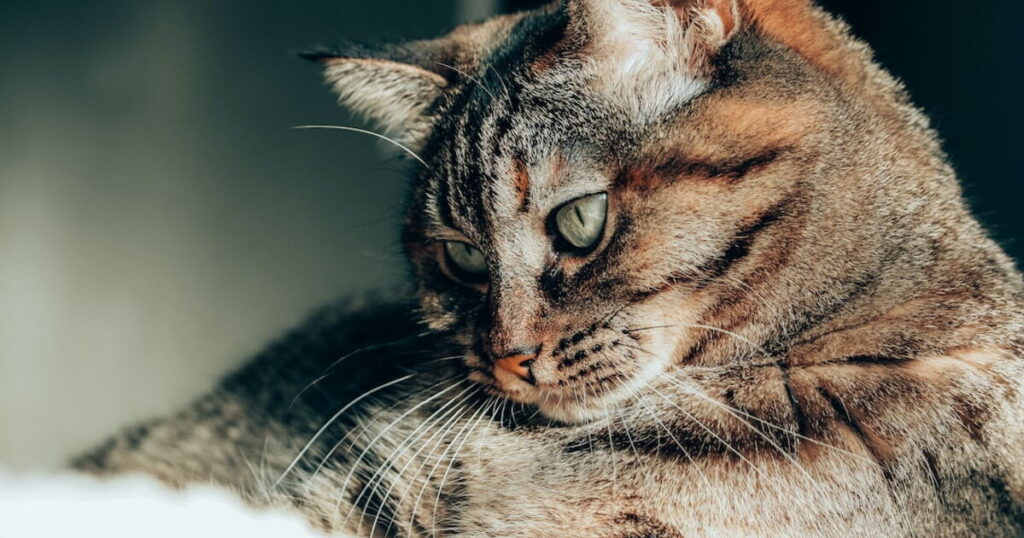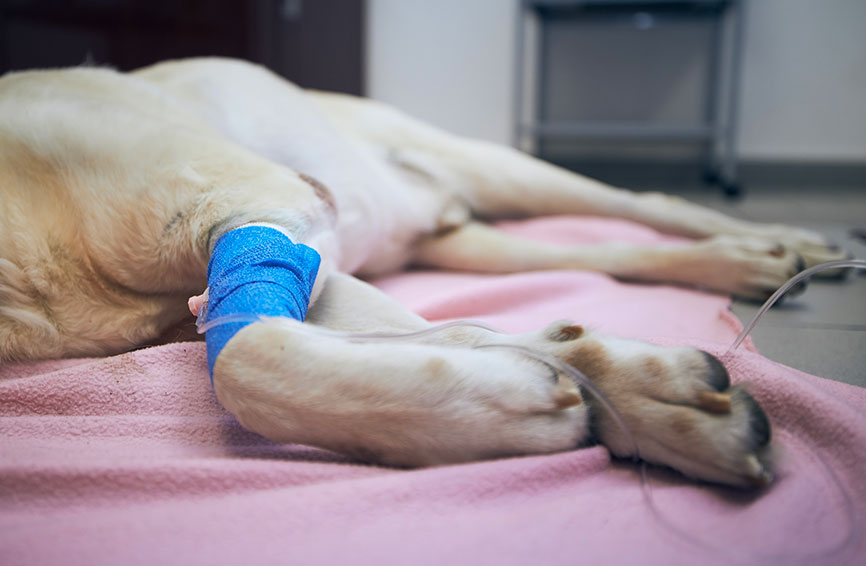
A cat, male or female, has no compelling need to reproduce. On the contrary, to preserve your health and general well-being, it is strongly recommended to favor sterilization. But how long does a cat need to recover from this operation?
Veterinarians are experts in these benign interventions, and thus ensure perfect control of this procedure. After the operation, the care that the cat will need is often minimal. By taking a few simple precautions, the animal will quickly be back on its feet. Sterilization of the female cat or castration of the male is therefore strongly recommended: these procedures significantly reduce the risk of certain cancers, such as mammary tumors in cats or prostate cancer in cats. In addition to preventing health problems, these operations also contribute significantly to the animal's quality of life.
How much does it cost to sterilize a cat?
The cost of sterilizing a cat can vary depending on several factors, including the sex of the animal and the region in which you live. On average, the cost of sterilization for a male cat generally ranges between 60€ and 90€while for a cat, you need to plan a more substantial budget, generally between 100€ and 150€ for an oophorectomy. Note, however, that these rates may be higher in cities, with an average cost estimated at 142€. Also, some veterinary practices can offer advantageous rates or payment facilities for this type of intervention. Consult several veterinarians to get the best price.
How long does it take for a cat to recover from castration?
The cat's recovery following the intervention is very rapid, allowing it to return to normal life very quickly: one to two days only. In the case of the male in fact, the operation is simpler, because no suture is necessary and there are no stitches to remove. And in general, it is not useful to prescribe post-operative medications. After returning home, you must especially ensure that the cat does not go out for two days if it usually has access to the outdoors. This restriction may be the most restrictive part for him. Shortly after surgery, the cat may also be disoriented and less responsive due to the anesthesia, which can put it in danger if it climbs on furniture.
Sterilization in cats: how long does recovery take?
In the vast majority of cases, the animal can be collected at the end of the day after contacting the veterinary clinic. However, it will not be necessary to feed the cat the same day. The veterinarian may also prescribe antibiotics to be administered for a few days. The cat may also appear tired and is likely to sulk at its bowl. during the two days following the operation. After the procedure, you should carefully monitor the wound to ensure that it remains clean and maintain properly cleaned bedding to do so. Within a week, the cat should be completely recovered. Approximately 10 to 12 days after sterilizationit will be necessary to make an appointment for a check of the scar and the removal of the stitches if they are not absorbable.
Is a sterilized cat calmer?
Sterilization has an impact on the cat's behavior, but it does not change its personality. Indeed, by suppressing sexual hormones, sterilization can cause reduction in reproductive behaviors such as aggression, running away or even urine marking.
This can actually make the cat calmer, especially around other animals. However, the degree of behavior modification varies between individuals, and some cats may, in rare cases, become more nervous or fearful after the procedure. In summary, while sterilization can make a cat more peaceful, it will not radically transform its character.
How does a cat behave after sterilization?
After sterilization, the cat will undergo hormonal changes which will affect his behavior. A neutered cat tends to be more calmmore affectionate And less aggressive. Indeed, since sterilization suppresses sexual hormones, it also eliminates behaviors linked to reproduction. Additionally, a sterilized cat is less likely to wander outside, reducing the risk of injury and illness.
It should also be noted that sterilization may result in weight gain due to a decrease in metabolism. It is therefore important to monitor your cat's weight after sterilization and adapt its diet accordingly. Finally, after the operation, the cat may be a little disoriented or less responsive due to the anesthesia. It is therefore recommended to limit your movements, particularly outside, for a few days.
Can a sterilized cat have intercourse?
Sterilization in cats, whether male or female, leads to a change in their sexual behavior. Although the question of whether a spayed cat can have intercourse seems complex, the answer is quite simple. Indeed, Once the cat is spayed, its reproductive organs are removed, eliminating its desire to mate.
This does not mean, however, that the cat will no longer be attracted to other cats. However, the attraction will be vaguer and less intense. This is due to the fact that sterilization removes sex hormones, which reduces behaviors related to reproduction. It is important to note, however, that each cat is unique and some may retain sexual behaviors, although this is rare. Additionally, if a spayed cat still exhibits intense sexual behaviors, it is recommended to consult a veterinarian, as this may be a sign of a health problem.
Can we let a cat out after sterilization?
After sterilization, a cat may be tempted to go outside, but this is an action to avoid for a few post-operative days to ensure its safety and good recovery. The cat still remains fragile although his condition seems to be improving quickly. It is recommended keep the animal indoors during a period of 7 to 10 days after the intervention. The first 24 to 48 hours are particularly crucial, during which the cat must rest and avoid any intense physical activity.
Also be sure to create an environment calm and secure, far from noise and other animals, to promote his convalescence. Monitoring your condition and the evolution of the scar is also important during this period.
Should you sterilize an apartment cat?
The question of sterilizing an apartment cat often raises questions. Indeed, if some think that an apartment cat, which does not go out and is therefore not likely to reproduce, does not need to be sterilized, others see clear advantages.
In particular, sterilization can help prevent unwanted behaviors such as running away, fighting or urine marking, common in unsterilized cats.. It also reduces the risk of certain types of cancer, particularly those related to the genitals. However, sterilization can also promote weight gain and, in some cases, make the cat more greedy. It is therefore essential to think carefully before making a decision and weigh the advantages and disadvantages.
Which kibble for cats that has undergone sterilization?
Sterilization, by modifying the cat's metabolism, can lead to weight gain. It is therefore essential to adapt your diet accordingly. Specific kibble for sterilized cats is an excellent option. They are generally lower in fat and higher in fiber, allowing your cat to feel full longer while still receiving the nutrients necessary for their health. Recommended brands include:
- Ultra Premium Direct : these grain-free kibbles have good value for money and are suitable for indoor and sterilized cats.
- Protect Obesity Cat from Pro-Nutrition: ideal for overweight cats, they help maintain a healthy weight after sterilization.
- Elmut Pet Food And Petty Well : These brands offer high-quality kibble options for sterilized cats.
It is advisable to make a transition period gradually over about a week when changing kibble to avoid digestive problems.
What is it to perform an oophorectomy on a cat?
Performing an oophorectomy on a cat is performing a surgical procedure to remove the animal's ovaries, thus making fertilization impossible. This operation is carried out under General anaesthesia and requires shaving and disinfecting the operating area. Different from ovariohysterectomy, which also involves removal of the uterus, oophorectomy is a common procedure to sterilize female cats. It can be carried out from the age of 6 months and does not require the animal to have had a prior litter.
How long does a female cat recover from surgery?
The length of time a female cat recovers from spaying surgery varies, but in general, a female cat returns to normal behavior within 48 hours of the procedure. During the first 24 to 48 hoursit may present a certain depression due to post-operative sensitivity.
It is essential to ensure that she remains calm and avoids moving too much so as not to disrupt healing. Likewise, make sure she doesn't lick the wound or try to remove the stitches. Post-operative follow-up with the veterinarian is necessary to monitor the progress of the healing and remove the stitches if necessary, usually 10 to 12 days after surgery.
This may also interest you :
⋙ What is the best age to sterilize a puppy?
⋙ Why do cats love boxes? The mystery finally solved!
⋙ Yes, your cat knows your first name!
⋙ Cats have incredible powers, here are them!
⋙ Does your cat have this strange behavior? Find out why!
⋙ At what altitude can you take a cat?




